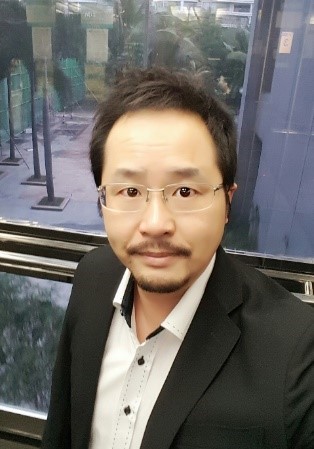STMicroelectronics is a highly renowned Semiconductor company that develops competitive products in segments of Smart Mobility, Power & Energy, and Cloud-connected Autonomous systems. It is among the global leaders with strong R&D and innovation teams working from across several locations around the world.
ST is also known for its innovative industry-first and leading fast wireless charging solutions. It has been providing wireless charging receivers to the largest smartphone makers in the world since day one.
Rashi Bajpai, Sub-Editor at ELE Times spoke with Mr. Leong Foo Leng, Director, Technical Marketing for Wireless Charging and Battery Management Products at STMicroelectronics about their latest Qi Wireless Charging Solutions.
This is an excerpt from the interaction.
- Help us understand the development process of Qi Wireless chargers.
To develop efficient Qi wireless charging solutions, it is crucial to define specific use cases for the wireless receiver and transmitter applications. This involves careful consideration of factors such as power requirements, system architecture, mechanical design, and coil selection.
The customer builds a prototype based on ST reference designs that are optimized for performance and efficiency, using our unique wireless power software and development ecosystem.
ST can provide support to key customers during coil design simulation and tuning of the wireless charging circuit, as well as the official Wireless Power Consortium Qi compliance tester to run in-house precertification tests to speed up the entire Qi certification process.
The Wireless Power Consortium (WPC) maintains and develops the standards for a variety of wireless power applications. This includes Qi standards for smartphones and portable devices up to 15W of power. There are more than 350 member companies in the consortium including STMicroelectronics.
Once the customer evaluates and validates their solution, they can submit their product for WPC Qi certification.
The process includes passing compliance testing at an Accredited Testing Lab (ATL), interoperability testing at an Interoperability Testing Centre (IOC) and being a WPC member in good standing as the product owner.
Certified products are allowed to use the Qi logo on the product and packaging.
- Brief us on STWLC38 and STWBC86 ICs’ use cases and application areas.
ST has a wide range of wireless charger IC solutions from 1 W to 100 W, including transmitters and receivers providing low standby power, accurate foreign object detection (FOD) and reverse charging features for personal electronics, industrial and medical applications.
STWLC38 is a Qi 1.3 certified receiver IC which is optimized for small form factor applications such as wearables and hearables. It was designed for low power applications and can deliver up to 15 W of output power. It is also capable of operating in Tx mode to transmit power to charge other devices. The device can provide power up to 5W Output power in this mode. STWLC38 can be paired with the STWBC86 transmitter IC for a complete wireless charging solution.
The chip comes in an ultra-compact WLCSP40 package (Wafer Level Chip Scale Package) measuring only 2.1mm by 3.3mm. The total area of the STWLC38 solution (including peripheral components) is 7mm x 7mm. The Vout is configurable from 4V – 12V in 25mV resolution. It is packed with the power of ARM 32-bit Cortex™-M0+ core running at up to 64MHz, 32kB RRAM for Firmware patch-ability like flash memory, 64KB ROM and 16kB RAM.
Two reference designs, STDES-WLC38WA and STDES-WLC38TWS, are available to simplify prototyping with the STWLC38 for wearable and true wireless stereo applications, respectively.

Some use cases for STWLC38 include medical and beauty devices as wireless charging enables a hermetic product design so devices can be easily sterilized before subsequent use.
Applications for STWLC38 include low-power wireless charging in smartphones, wearable/hearables, asset tracking devices, and medical, and healthcare equipment.
STWBC86 is a highly integrated monolithic wireless power transmitter solu
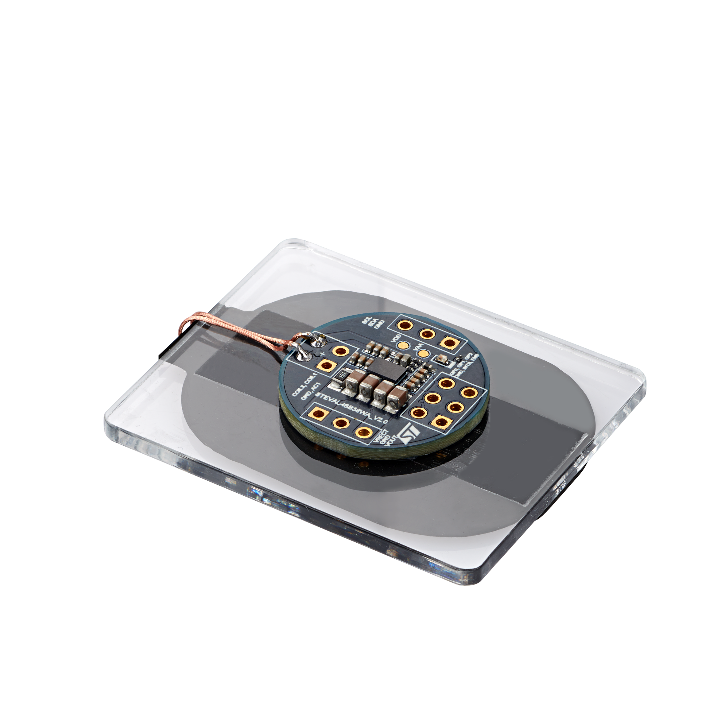
tion suitable for applications delivering up to 5 W.
This wireless power transmitter has a 32-bit, 64 MHz Arm® Cortex® M0+ microcontroller, SRAM, FTP (Few Times Programmable) NVM memory, 10-bit A/D converter, and on-chip current sense.
It also has an integrated low-impedance half-bridge/full-bridge inverter to achieve high efficiency and low power dissipation.
The STDES-WBC86WTX reference design, based on STWBC86, is available to help developers start a 2.5 W wireless charging project quickly.
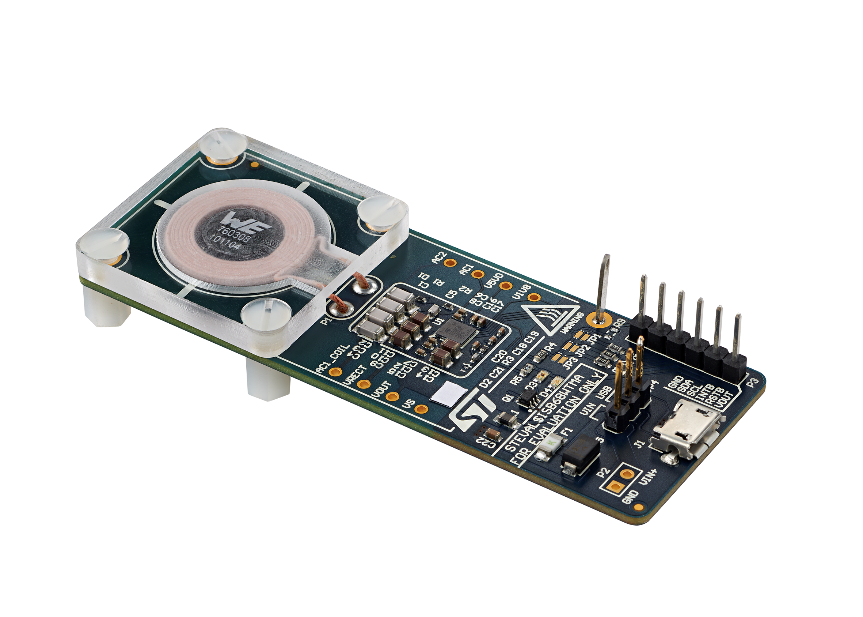
Applications for STWBC86 include Smartphone charging, medical electronics, Smart Wearables, and Charging for Hearables.
STWLC38 and STWBC86 use on-chip nonvolatile memory to save configuration parameters, and exchange configuration data and charging control commands through the I²C interface.
The STWLC38 receiver comes in a 2.12 mm x 3.32 mm WLCSP40 pin (Wafer Level Chip Scale) package, while the STWBC86 transmitter is in 3.26 mm x 3.67 mm WLCSP72 pin.
- Explain the role of STSW-WPSTUDIO in the development of Qi Wireless chargers.
The STSW-WPSTUDIO enables the tuning and design of wireless power devices. It provides support for the complete evaluation of wireless power device STWLC38 and STWBC86 from register tuning to the final NVM programming.
The GUI enables real-time monitoring of key internal parameters, which are streamed over a USB connection, and provides wizards to simplify otherwise complex tasks such as FOD (Foreign Object Detection) and custom coil design.
The GUI can be used to generate a custom configuration file, making it easier to quickly change the configuration of the board and/or transfer the configuration to another board.
The key features include:
- Access to key configuration registers
- Live chart of key electrical parameters such as output voltage, rectifier voltage,
- IC temperature and currents
- Coil selection wizard to assist in the design of a custom coil
- Foreign object detection (FOD) tuning wizard
- NVM programming
- Header generator tool for programming with an external microcontroller
- Brief us on the features of the STEVAL-WLC38RX receiver board and STEVAL-WBC86TX transmitter board.
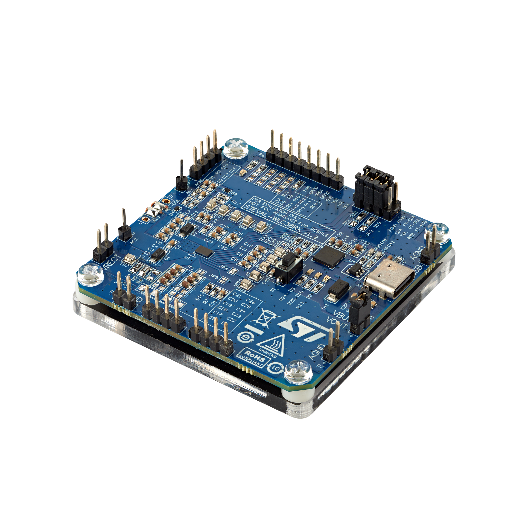
The STEVAL-WLC38RX evaluation board, based on STWLC38, is designed for wireless power receiver applications and allows its user to quickly start their wireless charging receiver projects.
Features-
- Design optimized for 15 W application using 8uH coil 57mmx57mm.
- WPC Qi 5W BPP and 15 W EPP compatible
- On board USB-I²C bridge for monitor and control the STWLC38 using the STSW-WPSTUDIO Graphical User Interface (GUI).
- User Manual, BOM, Schematic, PCB Gerber files for Evaluation and reference design available online:
https://www.st.com/en/power-management/stwlc38.html
STEVAL-WLC38RX includes several safety mechanisms providing over temperature (OTP), overcurrent (OCP) and overvoltage (OVP) protections as well as Foreign Object Detection (FOD) for reliable designs.
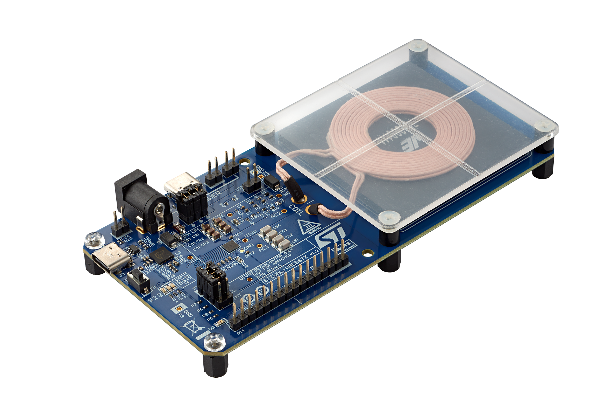
The STEVAL-WBC86TX evaluation board, based on STWBC86, is designed for wireless power transmitter applications and allows its user to quickly start their 5 W Qi BPP wireless charging projects.
Features
- Design optimized for 5 W application using 6.3 uH coil 53mmx53mm
- WPC Qi 5 W BPP compatible
- On board USB-I²C bridge for monitor and control the STWBC86 using the STSW-WPSTUDIO Graphical User Interface (GUI).
- User manual, BOM, Schematic, PCB Gerber files for evaluation and reference design available online:
https://www.st.com/en/power-management/stwbc86.html
STEVAL-WBC86TX includes several safety mechanisms providing over temperature (OTP), overcurrent (OCP) and overvoltage (OVP) protections as well as Foreign Object Detection (FOD) for reliable designs.
- Give us some insights into the intricate design of STEVAL-WLC38RX and STEVAL-WBC86TX evaluation boards and how they help in further enhancing the development of Qi wireless chargers.
The STEVAL-WLC38RX and STEVAL-WBC86TX evaluation boards are designed to help developers create high-performance Qi wireless chargers.
The boards have gone through Electro Magnetic Compatibility tests and conform to the EU Declaration of Conformity, as well as the UK Declaration of Conformity for the Radio Equipment Directive.
The on-board USB-I2C bridge allows for a direct interface with a PC to run a GUI tool.
The board features overvoltage and overcurrent protection, ensuring safe and reliable operation of Wireless charging solution.
The board, with test pins, provide easy access to critical power and communication signals for faster testing and debugging.
The evaluation boards can be used for quick testing and debugging. For the final customer prototype, they can reuse the reference design, for example, STDES-WLC38WA.
Watch more here: Wireless Charging Solutions for up to 15 W Applications



